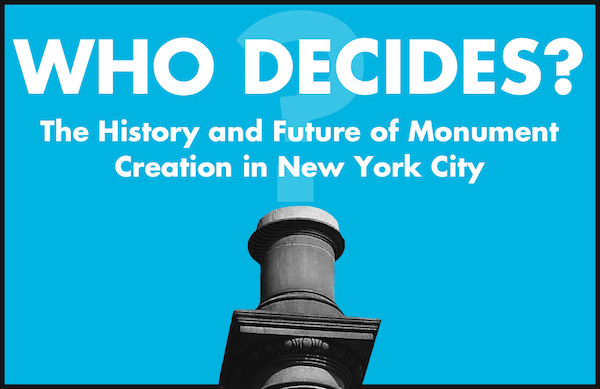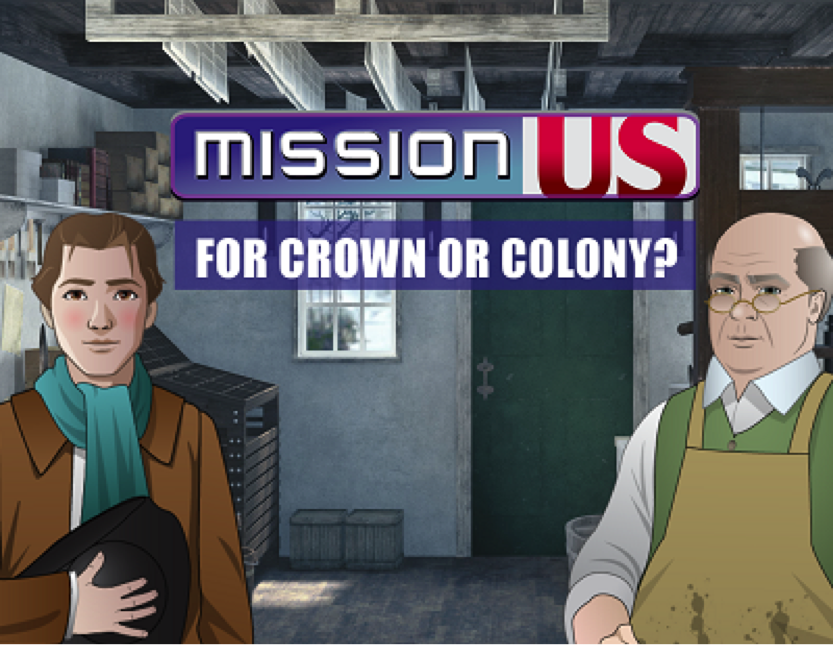September 2018
ASHP Hosts New Public Program Series

In partnership with The Gotham Center for New York City History and the CUNY Public History Collective, ASHP is hosting a series of public programs titled Difficult Histories/Public Spaces: The Challenge of Monuments in New York City and the Nation. The series brings together historians, art historians, community activists, and artists to discuss the ongoing reevaluation of public monuments and memorials and to engage with audiences about the often controversial histories represented.
ASHP held the first event, Monuments as: History / Art / Power on June 13, 2018. The panel presented a case study of the former J. Marion Sims monument on Fifth Avenue and 104th Street, and examined the historical context of Sims’s medical research and experimentation on enslaved women, the modern East Harlem community response to his current memorialization, and future possibilities for remembering this difficult history.
The second event, Who Decides? The History and Future of Monument Creation in New York City will be held on October 9, 2018 and will discuss the history of monument creation, visions for new projects, and the current pressures on New York City agencies to respond to public opinion. Participants will include Michele Bogart, author of the new Sculpture in Gotham: Art and Urban Renewal In New York City; Mary Anne Trasciatti, President, "Remember the Triangle Fire Coalition;” Jack Tchen, Professor of Public History and the Humanities, Rutgers University; and will be moderated by Todd Fine, History Doctoral Candidate, CUNY Graduate Center, and advocate of the monument for "Little Syria."
A third and final event, focused on alternative approaches to confronting and constructively addressing how difficult histories are memorialized in New York City and throughout the country, will be held on February 6, 2019. Further information will be posted closer to the date of the program.
All events are held in the Segal Theatre at the CUNY Graduate Center and are free and open to the public. The series is made possible with funding from Humanities New York and the National Endowment for the Humanities.
Visit https://ashp.cuny.edu/difficult-histories-public-spaces-series-public-programs to learn more about the upcoming programs.
2018 NEH Summer Institute – The Visual Culture of the American Civil War and Its Aftermath

During two weeks this past July, the American Social History Project/Center for Media and Learning held our fourth National Endowment for the Humanities Summer Institute. “The Visual Culture of the American Civil War and its Aftermath” institute was hosted by the CUNY Graduate Center and three New York City cultural institutions (New York Public Library, New-York Historical Society, and the Metropolitan Museum of Art). Attended by twenty-five NEH Summer Scholars selected from colleges, universities, and museums across the country, the institute featured presentations, discussions, visits to local archives and museums, and hands-on workshops that focused on the era’s visual media to assess how information and opinion about the war were recorded and disseminated, and to consider ways visual media expressed and shaped Americans’ understanding on both sides of the conflict. For this fourth institute, we explored the struggle for equality beyond the years of the war, including the visualization of the extended war in the West, Reconstruction, and Jim Crow.
The institute featured talks by fifteen noted historians, art historians, and archivists representing the range of current work in the field. In addition, a team of three institute faculty (Joshua Brown, Sarah Burns, and Gregory Downs) guided the participating scholars in ways to use visual evidence to enhance their research, writing, and teaching about the war and its short- and long-term effects. Topics discussed during the institute included Civil War photography, visualizing slavery and anti-slavery, the illustrated press, maps, textiles, Emancipation, the war in the West, and commemorative sculpture and public monuments. Visit https://ashp.cuny.edu/2018-schedule-and-syllabus for the full schedule of activities and speakers.
Coming in October – A Revitalized Mission US: For Crown or Colony

First launched in 2010, Mission US has more than 2 million registered users, including 80,000 teachers. However, since the first games were built in Flash – a format that will be phased out by 2020 – they will become unplayable within two years unless they are rebuilt using newer technology. With support from the National Endowment for the Humanities, we have rebuilt the first mission, For Crown or Colony in the Unity gaming platform and it will be released this fall. The work has gone beyond just updating old technology – revitalization enabled us to update content to deepen learning of key concepts and incorporate new historical scholarship. We also added accessibility features to support English Language Learners and other struggling readers, thereby hoping to reach new audiences.
Mission US: Time Snap – Can VR Enhance the Teaching of History?

In June 2018, the Mission US team — Electric Funstuff , WNET/Thirteen, the American Social History Project, and Education Development Center — received funding from the U.S. Department of Education’s Small Business Innovation Research (SBIR) to create a new groundbreaking series, Mission US: Time Snap. Building on a successful Phase I grant for prototype development and classroom testing, Time Snap combines new virtual reality (VR) technology with rigorous document-based instruction to explore how VR can support high school students in the work of “doing history.”
After decades of experimentation, VR is transporting audiences to normally out-of-reach places, allowing them to grapple with abstract concepts, scale, and dimensions in ways not possible with other media. With the production grant from the SBIR program, we are creating a series of four Time Snap missions that combine mobile headset-based VR and game-based learning to immerse high school students in four transformational moments in U.S. history: Boston, 1770; the Mason Dixon Line, 1851; the Great Plains, 1872; and the Lower East Side of New York, 1907.
Staff Changes

In August 2018, Executive Director Josh Brown began a leave of absence from ASHP/CML preparatory to retiring in 2019. Josh started working at ASHP at its inception in 1981, first as art director/creative director, lending his expertise in social history, visual culture, and illustration to the creation of the two-volume textbook Who Built America? Working People and the Nation’s History, the accompanying award-winning documentary series, and succeeding CD-ROMs—as well as ASHP’s many digital, online, and professional development projects. Taking on the role of executive director in 1998 and joining the Graduate Center’s History faculty in 2003, Josh has been an NEH, ACLS, and Guggenheim fellow, written and edited books and essays, and published numerous cartoons and illustrations. We await his forthcoming study of the visual culture of the Civil War and look forward to working with him on future collaborations. Associate Director Pennee Bender will serve as ASHP/CML’s interim director.
In May 2018, Associate Director Andrea Vasquez, was elected as First Vice President of the Professional Staff Congress, CUNY’s faculty and staff union. A media producer/director and art designer at ASHP/CML since 1989, Andrea is managing director of The Graduate Center’s New Media Lab and director of the CUNY Digital History Archive, the online resource on the university’s past. Andrea will continue her work at ASHP/CML at reduced hours.
In September, we welcomed Amanda Bellows to our staff as Research Assistant for History Curriculum and Public History. She earned her Ph.D. and master’s degree in History from the University of North Carolina at Chapel Hill. Her research interests include U.S. history in comparative and transnational perspective, slavery/emancipation, memory, and popular culture. She currently teaches at The New School and Hunter College, and serves as Project Historian for the New-York Historical Society’s latest exhibition, Black Citizenship in the Age of Jim Crow. At ASHP/CML Amanda works on researching and designing interactive features for our forthcoming Who Built America? open educational resource, including writing teacher-focused new features and editing primary documents.
